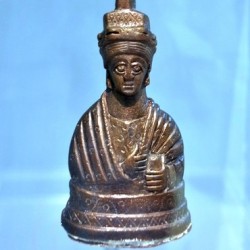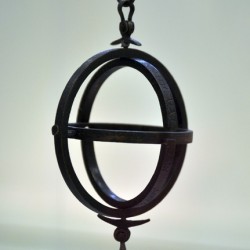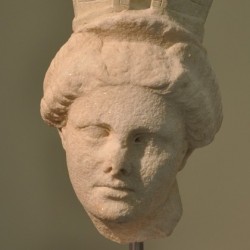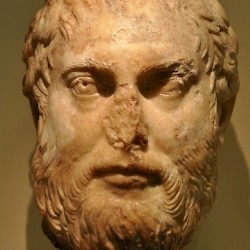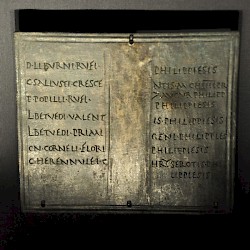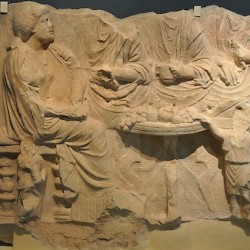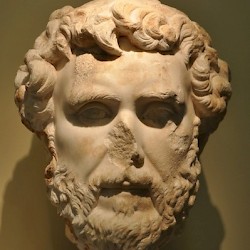Philippi
Q379652Philippi: town in eastern Macedonia, founded by king Philip II, famous for the double battle in 42 BCE that marked the end of the Roman republic.
Beginnings

In 356 BCE, Philip of Macedonia, who had only recently become king but had already presented himself as a capable general and a shrewd diplomat, was invited to become the protector of a Greek town named Crenides ("wells"), a colony of Thasos.
Realizing that Macedonian expansion into this area would on the one hand almost certainly cause troubles with the Thracians, but on the other hand, give the Macedonian king access to the ore mines of the Pangaeon mountains, he accepted what was offered, and the city received a new name: Philippi. The mines were exploited with new techniques, offering Philip an additional yearly income of no less than 1,000 talents, an immense amount of money.
Hellenism

The draining of a part of the extensive marshes to the southwest of the town improved agriculture, and Philippi became a wealthy town, something that was shown by building a theater and minting splendid coins. Products could be exported from a port called Neapolis, modern Kavala, another colony of Thasos.
Like many towns in ancient Macedonia, Philippi retained some autonomy, which meant - among other things - that people who wanted to be admitted to a Greek sanctuary were registered as Philippians, not Macedonians. This remained unchanged when the Romans dismantled the Macedonian kingdom after the battle of Pydna (168 BCE) and converted it into a province, about twenty years later.

A Roman road, the Via Egnatia, connected the town to Amphipolis, Thessaloniki, and the ports of the Adriatic sea in the west, and to Neapolis and Byzantium in the east. This road could be blocked at Philippi, which is situated on a precipitous hill, and Appian of Alexandria is correct to call the city "the gate from Europe to Asia".note
Battle

It was only natural that the plains west of Philippi would one day become the scene of an important battle. It happened in October 42 BCE, when two Roman armies met each other west of the city. Brutus and Cassius, the assassins of Julius Caesar and defenders of the constitution of the Roman republic, arrived from the port of Neapolis in the southeast, and a bit later, the triumvirs Mark Antony and Octavian arrived from the west, wishing to avenge the murder of Caesar. These men believed that monarchy was inevitable. This was more than just a battle between rival factions: it was about the future of the republic.
Because Brutus and Cassius had occupied the best positions, Mark Antony tried to circumvent Philippi by building a causeway through the wetlands south of the city, but Cassius discovered this and built a transverse dam. While his opponent was thus occupied, Mark Antony unexpectedly ordered his men to storm Cassius' camp. They were very successful, and Cassius, believing that all was lost, committed suicide before he had learned that Brutus had at the same time defeated the army of Octavian and had captured the camp of Mark Antony and Octavian. In other words, both sides had won a victory and suffered a defeat.

A second clash was decisive: a couple of days later, Mark Antony and Octavian were able to lure Brutus into a battle that he should not have accepted. In the end, the triumvirs were victorious. Eleven years later, Octavian defeated Mark Antony at Actium and became sole ruler of the Roman world, accepting the surname Augustus.
Roman city
Veterans of the double battle were settled at Philippi, which received the rank of colonia. The town started to grow rapidly, and the author of the Acts of the Apostles correctly calls the city "the leading city in that district of Macedonia"note

Today, a visitor can see a more or less Roman site at the foot of the acropolis, including two bathhouses, a forum, a temple dedicated to the emperor, an aqueduct, and inscriptions in Latin. There's also a temple for the Egyptian gods Isis, Serapis, and Harpocrates, which proves the international orientation of this town on the Via Egnatia. Another foreign religion was Judaism; in 49 or 50 CE, the apostle Paul of Tarsus met a community of Christians among the gentile sympathizers of Judaism, and stayed in Philippi for some time. His stay was not without problems, however: he was flogged on the market.note
Late Antiquity

In the fourth century, the victory of Christianity was complete, and the Greek language also regained ground in Philippi. Archaeologists have excavated three basilicas and a palace with splendid mosaics, which was used by the bishop.
The city was occupied by Goths in 473, but its favorable position meant that there was always a foundation for some prosperity. It survived the invasions of the Slavs, Bulgars, Crusaders, and the Turks, but appears to have been abandoned in the fifteenth century.

